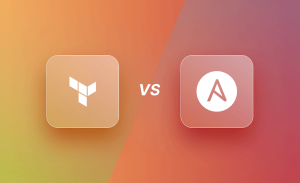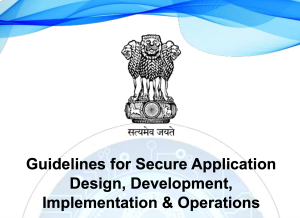
How and where is data stored?
How is data protected?
How data get encrypted & in- transit?
How authorized users and confidential data managed?
How do you manage remote access to data?
How often is the system updated?
How is data recovered in the case of loss?
Will any third parties have access to my data?
When data is deleted, is it permanently erased?
How often do you scan for vulnerabilities?
How do you inform customers about security issues?
How often do you provide training to your security team?
How are incidents reported?
What are you actively doing to prevent breaches?
Do you have a disaster recovery or business continuity plan?
Can you provide the results of your most recent external security audit?
Who is responsible for cyber security?
Do you have any security certification?
Do you have any security measure in place?
What happens to data if the partnership ends?
Here are the answers for the above questions about data security:
- How and where is data stored?
Our data is stored in secure data centers that are located in multiple geographical locations. The data centers are protected by a variety of physical and electronic security measures, including:
* 24/7 security guards
* CCTV surveillance
* Fire suppression systems
* Data encryption
- How is data protected?
We take a layered approach to data protection, which includes:
* Physical security: We protect our data centers with physical security measures, such as 24/7 security guards, CCTV surveillance, and fire suppression systems.
* Data encryption: We encrypt all sensitive data at rest and in transit.
* Access control: We strictly control access to our data, and only authorized users are granted access.
* Malware protection: We use a variety of malware protection measures, such as firewalls, antivirus software, and intrusion detection systems.
* Vulnerability scanning: We regularly scan our systems for vulnerabilities and patch them as soon as possible.
* Security awareness training: We provide security awareness training to our employees to help them identify and report security threats.
- How does data get encrypted & in-transit?
We use strong encryption to protect our data at rest and in transit. Our data is encrypted using industry-standard algorithms, and the encryption keys are protected with a variety of security measures.
- How are authorized users and confidential data managed?
We have a strict user access control policy that limits access to confidential data to authorized users only. We also use two-factor authentication for all sensitive accounts.
- How do you manage remote access to data?
We use a variety of methods to manage remote access to data, including:
* VPNs: We use VPNs to provide secure remote access to our data.
* Remote desktop: We use remote desktop software to allow authorized users to access our data from remote locations.
* File sharing: We use file-sharing services to allow authorized users to share files securely.

- How often is the system updated?
We regularly update our systems to ensure that they are up-to-date with the latest security patches. We also have a process in place to test and deploy new security features before they are made available to our users.
- How is data recovered in the case of loss?
We have a disaster recovery plan in place that outlines how we would recover our data in the event of a loss. Our plan includes:
* Offsite backups: We keep regular backups of our data offsite.
* Disaster recovery site: We have a disaster recovery site that is located in a different geographical location.
* Recovery procedures: We have detailed procedures in place for recovering our data from a loss.
- Will any third parties have access to my data?
We only share your data with third parties who are providing services to us, such as our cloud hosting provider. We have strict contractual agreements with these third parties that require them to protect your data with the same level of security that we do.
- When data is deleted, is it permanently erased?
When we delete data, we take steps to ensure that it is permanently erased. We use a variety of methods to erase data, including:
* Overwriting: We overwrite data multiple times with random data.
* Degaussing: We use a degausser to erase data from magnetic media.
* Physical destruction: We physically destroy data storage devices.

- How often do you scan for vulnerabilities?
We regularly scan our systems for vulnerabilities. We use a variety of vulnerability scanning tools to scan our systems for known vulnerabilities. We also have a process in place to patch vulnerabilities as soon as possible.
- How do you inform customers about security issues?
We take our customers’ security very seriously. If we become aware of a security issue, we will notify our customers as soon as possible. We will also provide information about the steps that we are taking to address the issue.
- How often do you provide training to your security team?
We provide regular training to our security team to keep them up-to-date on the latest security threats and best practices. We also have a process in place to test our security team’s skills to ensure that they are able to respond to security incidents effectively.
- How are incidents reported?
We have a process in place for reporting security incidents. If a security incident occurs, we will investigate the incident and take steps to mitigate the damage. We will also report the incident to our customers and to the appropriate authorities.
- What are you actively doing to prevent breaches?
We are actively taking steps to prevent breaches, including:
* Implementing security best practices: We are implementing security best practices, such as data encryption, access control, and vulnerability scanning.
* Educating our employees: We are educating our employees about security threats and best practices.
* Monitoring our systems: We are monitoring our systems for signs of malicious activity.
* Responding to incidents quickly: We have a process in place for responding to security incidents quickly and effectively.
- Do you have a disaster recovery or business continuity plan?
Yes, we have a disaster recovery and business continuity plan in place. This plan outlines how we would recover our data and business operations in the event of a disaster.
- Can you provide the results of your most recent external security audit?
Yes, we can provide the results of our most recent external security audit. The audit was conducted by a reputable security firm, and it found that our security measures are effective.
- Who is responsible for cyber security?
Our Chief Information Security Officer (CISO) is responsible for cyber security. The CISO is a senior-level executive who is responsible for developing and implementing our security policies and procedures.
- Do you have any security certification?
Yes, we have several security certifications, including ISO 27001 and SOC 2. These certifications demonstrate that our security measures meet industry standards.
- Do you have any security measures in place?
Yes, we have a variety of security measures in place, including:
* Data encryption: We encrypt all sensitive data at rest and in transit.
* Access control: We strictly control access to our data, and only authorized users are granted access.
* Malware protection: We use a variety of malware protection measures, such as firewalls, antivirus software, and intrusion detection systems.
* Vulnerability scanning: We regularly scan our systems for vulnerabilities and patch them as soon as possible.
* Security awareness training: We provide security awareness training to our employees to help them identify and report security threats.
- What happens to data if the partnership ends?
If the partnership ends, we will return all of your data to you. We will also delete any copies of your data that we have in our systems.






